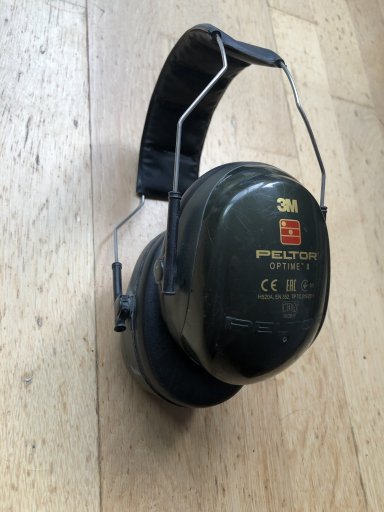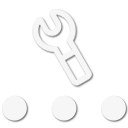
Protector III
- 14,131
- First Name
- Bjoern
- Last Name
- Eldracher
- Member #
-
20111
- Ham/GMRS Callsign
- DO3BE
When we talk about tools, we also have to talk about health and safety measures. That is important. For the commercial sector, there are often precise regulations on this, but when we tinker or repair something privately, these measures are just as important. Very easily something happened during vehicle repair or mounting new equipment. With the right protective clothing, risks can be effectively mitigated.
Safety starts with obviously very simple things. These include order and cleanliness in the workplace. A cable lying crosswise, a heavy tool lying on a corner of the workbench, oily tools or spilled liquids on the floor. These are just a few examples that can quickly lead to an accident. By the way, working is also more fun when there is order, because then you can work instead of looking for something.
Great dangers also lurk in areas where loads are lifted. For example, a vehicle that is jacked up. Extreme caution and attention are required here. The vehicle must always be lifted and jacked up properly and safely. And always work with the right tool, that is, the tool intended and designed for the job. This can also prevent serious accidents
We continue with the correct personal protective equipment. In companies, there are usually hazard analyses from which it can be derived what must be worn in order to minimize risks as far as reasonably possible. We should also remember this in our free time.
During typical maintenance work, we often come into contact with harmful operating fluids. Protective gloves are the order of the day here. If we are painting or sanding, we should also wear a dust mask and safety goggles. It is also important to wear suitable footwear, preferably safety shoes, which provide the necessary protection for the work we are doing. Sometimes it is also machines that we use and that are loud. Against this noise we should protect ourselves effectively with a suitable hearing protection. Here, simple earplugs come into question, better and more comfortable to wear is a proper capsule hearing protection.
For welding or electrical work, further protective measures are of course required. Super important in welding are, of course, the complete safety equipment such as flame-retardant, high-necked and not contaminated by flammable substances clothing, safety shoes with gauntlets, special welding gloves, a leather apron, welding helmet and so on.
It is also important not to wear just any gloves, or any protective goggles. There is something available for every purpose. Pay attention to the specifications for abrasion resistance, protection against heat, cold or moisture, protection against electrostatics or permeation resistance (because of chemicals). Of course, it is also important that you have sufficient feeling in the gloves for the respective work. For other protective measures such as safety glasses, there are also categorizations, some glasses are designed for protection against liquids, gases, coarse or fine dust or impacts. All this to name just a few examples.
A good basic set containing for example a work jumpsuit, gloves and goggles for repairs on the trail does not take up much space and weight, and thus also fits into any overlanding rig. I always have a jumpsuit with me because it also has the advantage that if I repair something on the road, I can quickly put it on and off and get back into the car with clean clothes after work.
If you have a breakdown on the road, there are also dangers lurking there. Make sure you secure the site of the breakdown before making any repairs. If traveling in the desert or other hot areas, it might be a good idea to avoid working in the midday heat and drink enough to avoid health issue.
Many jobs should only be carried out by specialists or with the appropriate knowledge. This includes in particular safety-relevant components on our vehicles. In any case, it is important to ensure a sufficiently safe working environment, among other things by using the right protective equipment. The subject is very diverse and complex, and there are numerous standards and regulations on this in the individual countries.
So, these are just a few examples and ideas from my experience to draw attention to this important topic and to encourage people to think about it. I suffered an eye injury at the beginning of the year which fortunately healed quite well, so I know what I'm talking about and what can happen when working. I'm sure many of you have more experience on the subject. I would be happy about more contributions on this important topic and tips on what safety equipment you carry when you are on the road.
Think safety!
Safety starts with obviously very simple things. These include order and cleanliness in the workplace. A cable lying crosswise, a heavy tool lying on a corner of the workbench, oily tools or spilled liquids on the floor. These are just a few examples that can quickly lead to an accident. By the way, working is also more fun when there is order, because then you can work instead of looking for something.
Great dangers also lurk in areas where loads are lifted. For example, a vehicle that is jacked up. Extreme caution and attention are required here. The vehicle must always be lifted and jacked up properly and safely. And always work with the right tool, that is, the tool intended and designed for the job. This can also prevent serious accidents
We continue with the correct personal protective equipment. In companies, there are usually hazard analyses from which it can be derived what must be worn in order to minimize risks as far as reasonably possible. We should also remember this in our free time.
During typical maintenance work, we often come into contact with harmful operating fluids. Protective gloves are the order of the day here. If we are painting or sanding, we should also wear a dust mask and safety goggles. It is also important to wear suitable footwear, preferably safety shoes, which provide the necessary protection for the work we are doing. Sometimes it is also machines that we use and that are loud. Against this noise we should protect ourselves effectively with a suitable hearing protection. Here, simple earplugs come into question, better and more comfortable to wear is a proper capsule hearing protection.
For welding or electrical work, further protective measures are of course required. Super important in welding are, of course, the complete safety equipment such as flame-retardant, high-necked and not contaminated by flammable substances clothing, safety shoes with gauntlets, special welding gloves, a leather apron, welding helmet and so on.
It is also important not to wear just any gloves, or any protective goggles. There is something available for every purpose. Pay attention to the specifications for abrasion resistance, protection against heat, cold or moisture, protection against electrostatics or permeation resistance (because of chemicals). Of course, it is also important that you have sufficient feeling in the gloves for the respective work. For other protective measures such as safety glasses, there are also categorizations, some glasses are designed for protection against liquids, gases, coarse or fine dust or impacts. All this to name just a few examples.
A good basic set containing for example a work jumpsuit, gloves and goggles for repairs on the trail does not take up much space and weight, and thus also fits into any overlanding rig. I always have a jumpsuit with me because it also has the advantage that if I repair something on the road, I can quickly put it on and off and get back into the car with clean clothes after work.
If you have a breakdown on the road, there are also dangers lurking there. Make sure you secure the site of the breakdown before making any repairs. If traveling in the desert or other hot areas, it might be a good idea to avoid working in the midday heat and drink enough to avoid health issue.
Many jobs should only be carried out by specialists or with the appropriate knowledge. This includes in particular safety-relevant components on our vehicles. In any case, it is important to ensure a sufficiently safe working environment, among other things by using the right protective equipment. The subject is very diverse and complex, and there are numerous standards and regulations on this in the individual countries.
So, these are just a few examples and ideas from my experience to draw attention to this important topic and to encourage people to think about it. I suffered an eye injury at the beginning of the year which fortunately healed quite well, so I know what I'm talking about and what can happen when working. I'm sure many of you have more experience on the subject. I would be happy about more contributions on this important topic and tips on what safety equipment you carry when you are on the road.
Think safety!



